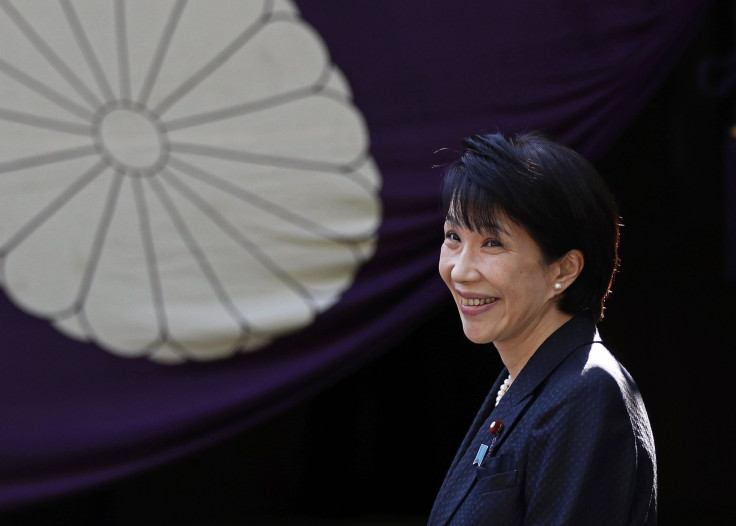Japan Ministers Visit Controversial Yasukuni Shrine Day After PM Shinzo Abe's Offering

(Reuters) - Three Japanese cabinet members visited a shrine for war dead on Saturday a day after Prime Minister Shinzo Abe drew angry responses from China and South Korea by sending a ritual offering there.
Tokyo's Yasukuni Shrine is widely seen as a symbol of Japan's past militarism and visits there by politicians anger China and South Korea, which both suffered under Japanese occupation in the last century and feel Japan has never fully atoned for its actions.
Internal Affairs and Communications Minister Sanae Takaichi, who is a regular visitor to the shrine, went there on Saturday after telling reporters this week she wanted to pay her respects to those who have died in wars.
"The nature of the visit should not be a topic that leads to diplomatic issues," Takaichi told reporters, saying she wanted to honor those who had died for their country.
Domestic media reported that Eriko Yamatani, minister in charge of abduction issues and head of the National Public Safety Commission and Haruko Arimura, minister tasked with promoting women and gender equality, also visited Yasukuni on Saturday.
The shrine honors wartime leaders convicted by an Allied tribunal as war criminals along with millions of war dead.
Several other ministers could also visit this weekend as the shrine celebrates its autumn festival.
Abe outraged Beijing and Seoul by visiting Yasukuni in person in December 2013. He has said he visited not to glorify war, but to honor those who fought and died for their country.
But he has stayed away from the shrine since the 2013 visit, instead sending offerings on key dates, seeking to tread a fine line between his conservative convictions and the diplomatic imperative to improve ties with China.
Japanese forces occupied parts of China before and during World War Two, while Japancolonized Korea from 1910 to 1945.
On Friday, China expressed "serious concern" after Abe's offering while South Korea said it deplored the offering to a the shrine, which it called "the symbol of glorification of Japan's colonization and invasive war".
(Reporting by Yuya Shino and Shinichi Saoshiro; Editing by Robert Birsel)
© Copyright Thomson Reuters 2024. All rights reserved.





















